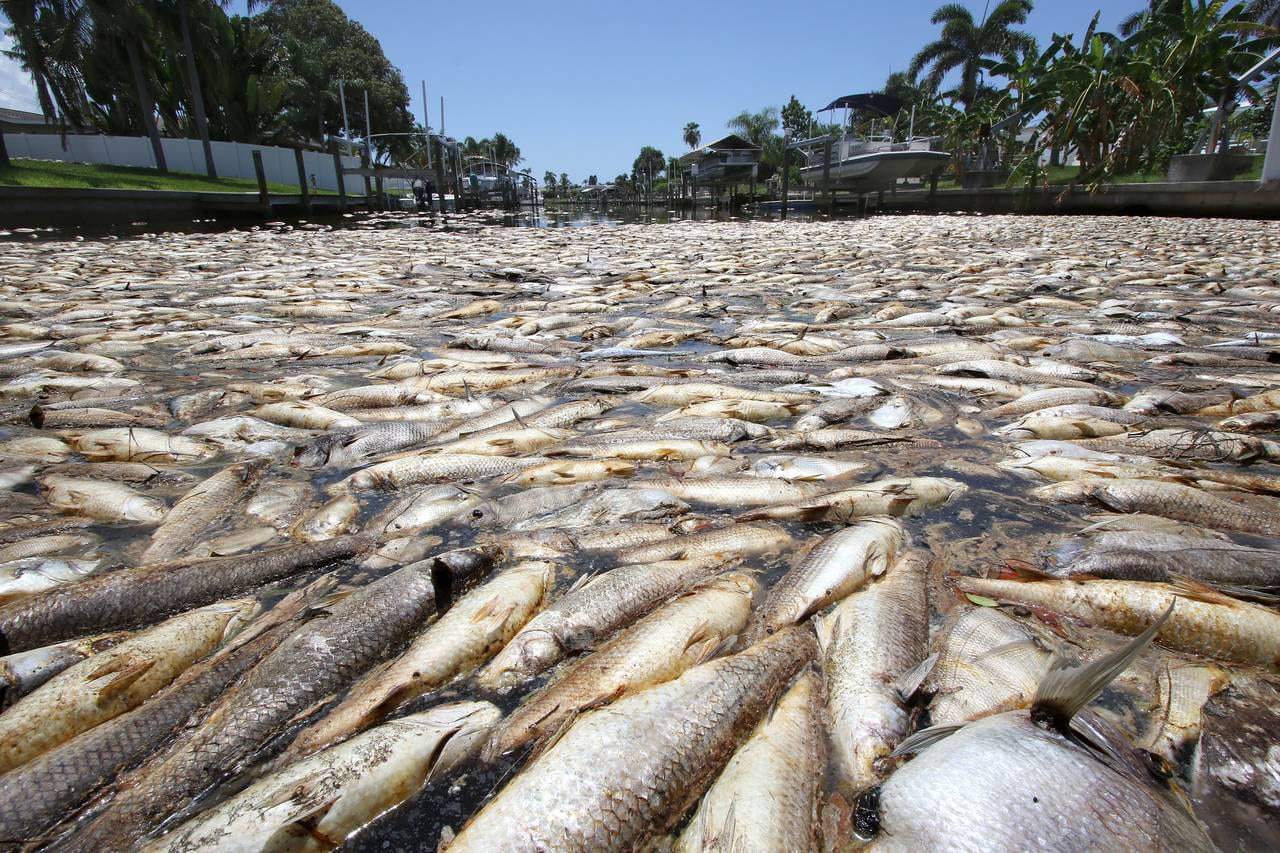Doris Pace
South Bureau Chief
Florida’s red tide has reached levels scientists have never seen before. The algae which is causing this natural phenomenon is normal but not at the concentration and duration which we are currently witnessing.
Marine life is washing up ashore in large numbers, beaches have been closed and people living in the affected areas are feeling the effects as well. Events normally held along the coast are seeing a huge decline in attendance and visitors report such a foul smell from the carcasses of animals like dolphins, sea turtles and birds that even face masks can’t hide the smell, forcing them to leave.
Karenia Brevis algae, known to us as red tide, is common in the Florida and Texas Gulf coasts. Under normal circumstances the algae bloom starts late summer to early fall. In our case, the current algae bloom started last year around October lasted through spring, subsided for a bit and then resurfaced again early this summer. Some areas where shellfish are harvested have been closed since last year, greatly affecting the economy of the surrounding areas.
As of Aug. 15 2018, the National Oceanic and Atmospheric Administration (NOAA) reports that six counties along the south western coast of Florida are being affected by this algae bloom.
When waves move and crash into the algae toxins are released. Karenia Brevis produces neurotoxins that affects the central nervous systems of organisms and causes some of them to die. If shellfish become contaminated by the algae and consumed by humans the result will most likely be a 3-day long bout with diarrhea and discomfort.
People with emphysema and asthma are advised to stay away from beaches where red tide is present as their symptoms can become worse or other serious ailments can present themselves as a result of contact with the toxins. Those who do not suffer from existing conditions can still experience respiratory irritation.
As of now there is no answer as to when the current bloom will subside because there are many factors such as sunlight, salinity, wind and speed of the currents that affect the growth and continuous presence of red tide. Hurricanes can also be added to this list. Hurricane winds can carry the algae hundreds of miles away.
The presence of red tide can also change from week to week or day by day. A beach affected today may not be tomorrow or the next week.
For updates on the current beaches affected by the red tide, visit the NOAA or Florida Fish and Wildlife Conservation Commission websites for the latest reports.
algd@mail.broward.edu
Photo Credit:Matt Houston/Wallstreet Journal
